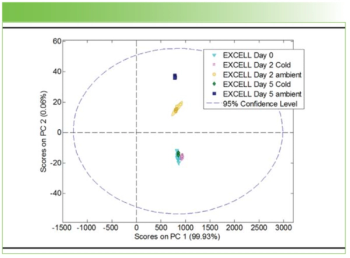
Revolutionary Advances in Diagnosing Brain Disorders: The Promise of Liquid Biopsy and Raman Spectroscopy
Recent research highlights the potential of liquid biopsy combined with Raman spectroscopy (RS) in diagnosing brain disorders. These innovative techniques offer non-invasive, precise, and continuous monitoring capabilities, presenting a promising future for early detection and intervention in conditions such as neurodegenerative diseases (NDs) and traumatic brain injury (TBI).
Brain disorders, including neurodegenerative diseases (NDs) like Alzheimer's (AD) and Parkinson's (PD), as well as traumatic brain injury (TBI), pose significant challenges for early diagnosis and treatment. Current imaging methods, while useful, often lack the molecular specificity needed for precise disease characterization. A research review paper by Jeewan C. Ranasinghe, Ziyang Wang, and Shengxi Huang from Rice University, published in the journal Nanoscale, explores the potential of liquid biopsy and Raman spectroscopy (RS) as transformative tools in diagnosing these complex conditions. This extensive review contains detailed analysis and context for 223 research paper publications (1).
Read More:
Innovative Diagnostic Approaches
The study emphasizes the shortcomings of conventional diagnostic techniques, such as computer tomography (CT) scans and magnetic resonance imaging (MRI), which are costly, time-consuming, and often fail to provide detailed molecular information. Liquid biopsy, focusing on blood, tear, saliva, and cerebrospinal fluid (CSF), emerges as a promising alternative. This method is minimally invasive, highly repeatable, and offers the potential for continuous monitoring, providing rich molecular data crucial for early diagnosis (1).
The Power of Raman Spectroscopy
RS is highlighted for its ability to provide detailed molecular information cost-effectively. Recent advancements in Raman enhancement technologies and data analysis methods have significantly improved its application in identifying molecular signatures within biological fluids. RS can detect and quantify specific biomolecular changes in biofluids, offering insights into disease pathology that are vital for early and accurate diagnosis (1,2).
Applications in Neurodegenerative Diseases
The study details the profound impact of NDs, particularly Alzheimer's, which affects millions globally. According to the Alzheimer's Association, more than 6 million Americans currently have AD, a figure projected to nearly double by 2050. The economic burden is equally staggering, with treatment costs expected to surpass $500 billion annually by 2040. The socioeconomic impact extends to other disorders like Parkinson's, emphasizing the need for advanced diagnostic tools (1).
Raman Spectroscopy and Liquid Biopsy Integration
The integration of RS with liquid biopsy techniques offers a revolutionary approach to diagnosing brain disorders. RS provides unique molecular fingerprints by analyzing vibrational patterns of molecules in biofluids, making it possible to detect disease-specific biomarkers with high sensitivity and specificity. This non-invasive method can monitor metabolic changes, offering valuable insights into disease progression and enabling timely intervention (1).
Challenges and Future Prospects
Despite its promise, the application of RS in clinical settings faces challenges, such as standardization and reproducibility. However, ongoing research and technological advancements are addressing these issues. The study highlights the potential of surface-enhanced Raman spectroscopy (SERS) and machine learning techniques to further enhance the sensitivity and accuracy of RS, making it a robust tool for early diagnosis and monitoring of brain disorders (1).
Conclusions
The research by Ranasinghe, Wang, and Huang underscores the transformative potential of combining liquid biopsy with Raman spectroscopy for diagnosing brain disorders. As technological and methodological advancements continue, these techniques are poised to revolutionize early detection and personalized treatment strategies, significantly impacting public health outcomes. The future of RS and liquid biopsy in clinical diagnostics looks promising, offering new hope for patients with neurodegenerative diseases and traumatic brain injuries (1).
References
(1) Ranasinghe, J. C.; Wang, Z.; Huang, S. Unveiling Brain Disorders Using Liquid Biopsy and Raman Spectroscopy. Nanoscale 2024, 16 (25), 11879–11913. DOI:
(2) Wang, Z.; Ye, J.; Zhang, K.; Ding, L.; Granzier-Nakajima, T. et al. Rapid Biomarker Screening of Alzheimer’s Disease by Interpretable Machine Learning and Graphene-Assisted Raman Spectroscopy. ACS nano 16(4), 6426–6436. DOI:
Newsletter
Get essential updates on the latest spectroscopy technologies, regulatory standards, and best practices—subscribe today to Spectroscopy.





